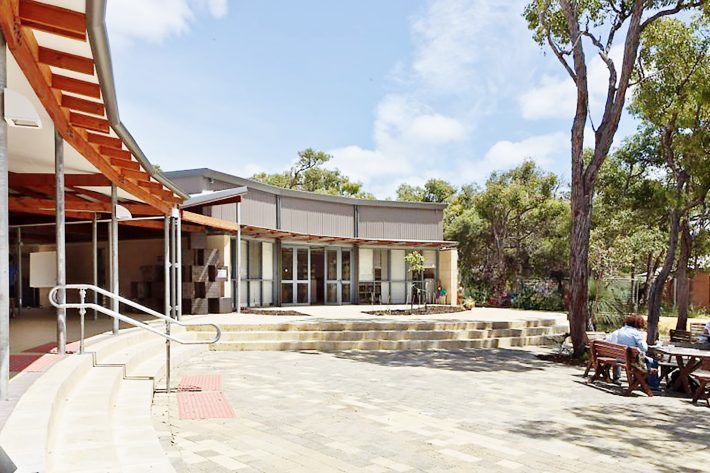Navigating the BGA Capital Grant Process: A Collaborative Effort
How to prepare a grant application for independent schools in Australia
National and State government building grants provide an ideal opportunity for a School’s vision come to fruition. Timely collaboration between a School’s education coordinator and Architect can make this happen. A detailed understanding of the School’s curriculum needs and opportunities for staged building packages is critical to ensure the right facilities are built at the right time and in the right place!
Baxter and Jacobson Architects offer extensive experience in educational projects, particularly in the context of BGA Capital Grant funding requirements. We understand the process and can move quickly to develop a submission. We also collaborate with Quantity Surveyors to provide project cost breakdowns in the format the application requires, including ‘hidden’ costs such as site services and infrastructure.

To assist in the preparation of BGA applications, we have highlighted some key considerations and created a useful chart of action: How to prepare a grant application for independent schools in Australia. This outlines the roles in the collaboration between the School and Architect. It is worth noting the BGA requires competitive tendering, professional contract administration and end of job certification of payments, all of which form part of BJA’s professional service.
Aligning Objectives and Timings
Schools may identify their needs and make initial funding enquiries to their State BGA. To follow up, it is critical that the preferred project is underpinned by a considered master site plan with site constraints identified and options for staged construction considered. Schools that already have a Master Plan in place are best able to identify current priorities and future project stages.
Cost Planning
The application cost estimate is based on $ per square metre rates applied to floor areas designed with an understanding of the complexity of simplicity of a design.Steiner Schools search for the balance between purely utilitarian buildings and architectural expression that is aesthetically uplifting AND functional, aligning with the School’s pedagogy and values. Excellent design supports student engagement, assists teaching and translates into increased enrolments.
How to prepare a grant application for independent schools in Australia

| 1. VISION AND STRATEGIC PLANNING | School’s Role | Architect’s Role |
|---|---|---|
| Articulate Vision and Goals | Based on the Schools’ Vision Statement and educational principles, articulate the unique identity and values of the school. How do you want the school to be in 10,20,30 years? | BJA facilitates workshops (charettes) with teachers, board members, and administrators + the borader school community as needed, to gather input and understand the school’s unique needs and aspirations. We will listen and observe to understand opportunities and constraints, specific to your School. |
| Curriculum Needs Assessment | Assess what new facilities are needed to support and enhance the learning experience, based on a realistic assessment of the student enrolments – current and projected. | Assess and advise options for grouping of facilities, functional areas, services required and staging options. |
| Master Planning | Develop a ‘big-picture’ Brief. Identify facilities needed to complete the school for example; single or double stream, early learning, specialist subject emphasis, parking and access. Consider; aesthetic values and preferred architectural character. Identify sustainability goals; energy efficiency, water conservation, integrated educational focus. |
Prepare schedules of existing and future facilities and functional areas. Provide templates for customisation. Test assumptions and inspire with examples of completed school projects. Assess planning controls and required site services and access. Develop a comprehensive Master Plan that considers the School’s long-term growth, integrates new facilities with existing, and addresses site constraints and opportunities. This will involve a creative, visual dialogue with the School. |

| 2. PROJECT SCOPE & DESIGN DEVELOPMENT | School’s Role | Architect’s Role |
|---|---|---|
| Develop Project Brief for Grant application | Define the scope of the project, including: – Functional requirements e.g., classroom sizes, lab equipment, performance space capacities, services – Budget constraints |
Guide the development of a detailed project Brief that accurately reflects the School’s needs, aspirations and capabilities. Prepare preliminary Budgets |
| Concept Design | Establish a representative building committee and leader to engage in a creative dialogue with BJA and provide timely feed back on concept plans. | Develop initial concept sketch plans and 3D models to visualize the proposed buildings and integration on site. Provide schedules of areas Provide advice re: pros and cons of smaller Vs larger build packages, timeframes and staging of works. If required, coordinate and integrate consultants such as bush fire restrictions, parking and traffic, ecology and site services. |
| Cost Estimation & Scheduling | Provide realistic and optimistic assessments of future enrolment numbers, cash flow and borrowing capacity. | Coordinate Quantity Surveying to prepare cost estimates. Define the design finesse appropriate for the School. |

| 3. FUNDING & BGA APPLICATION | School’s Role | Architect’s Role |
|---|---|---|
| BGA Application Preparation | Gather necessary documentation for the BGA application and prepare the on-line application with input from the Architect. | Advise consultants to prepare demographic and financial modelling for the school. Prepare and format plans, schedules and costings to support the application including; Master Plan documents, concept design plans of proposed buildings, building and fit-out cost estimates and professional fees. |

Implementing Design and Architectural Services for Independent School’s in Australia
Architectural Services from master plan through to project completion
Schools typically proceed with a Development Application (DA) for the project whilst the Grant application is being assessed. Design development, documentation, preparing a DA and obtaining approval can take 9-12 months or more. Subsequent stages include construction documentation, CC, calling tenders and construction and it is important to anticipate a 2-year time frame from conception to occupation of a new school building.
BJA offer all professional stages to successfully deliver the projects envisioned by your School and funded by the BGA.
| 4. FURTHER STAGES OF ARCHITECTURAL SERVICES | School’s Role | Architect’s Role |
|---|---|---|
|
Design Development
|
Design committee collaborate with Architect to fine tune the plans | Refine and develop concept design plans to test form & function and best ‘fit’ |
|
Development Application/ Planning Consent
|
Provide input, review and approve final plans to lodge planning application | Coordinate consultants and integrate their input, prepare planning application documents, lodge the application & monitor assessment process, review and report on planning consent conditions |
|
Construction Documentation & Tendering
|
Provide input on details and inclusions, review documents, nominate preferred contractors | Prepare detailed construction drawings and specifications, manage the tendering process |
|
Construction Administration
|
Attend meetings, consider variations and progress, pay progress claims | Prepare contracts, administer the construction process, ensure adherence to design and budget, and address unforeseen issues |
|
Project Completion & Handover
|
Take possession of your wonderful new facilities! | Conduct final inspections, obtain necessary approvals and assist with the handover of the completed project to the School. |

Note: The specific stages and roles may vary depending on the actual grant program.

